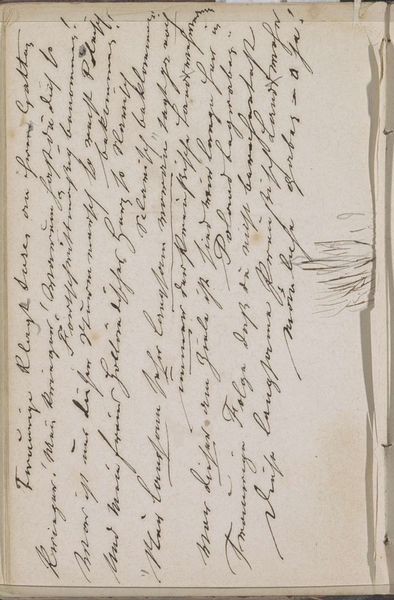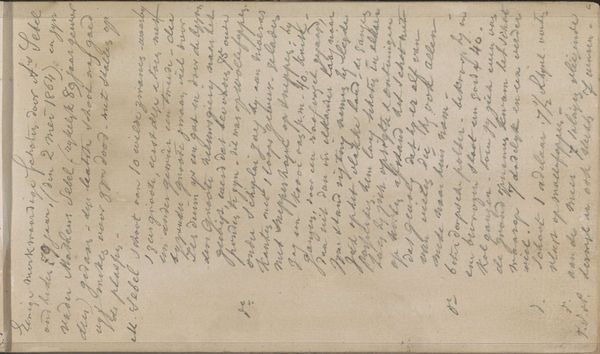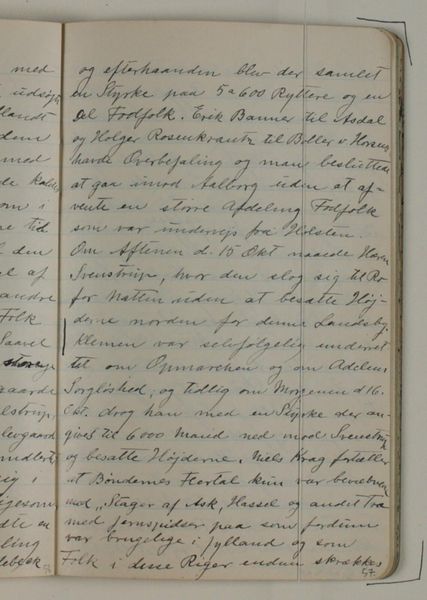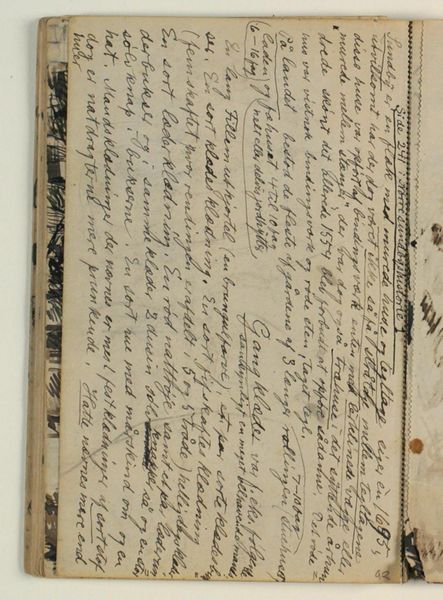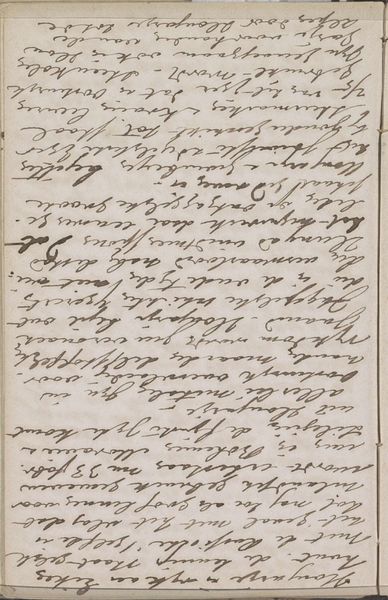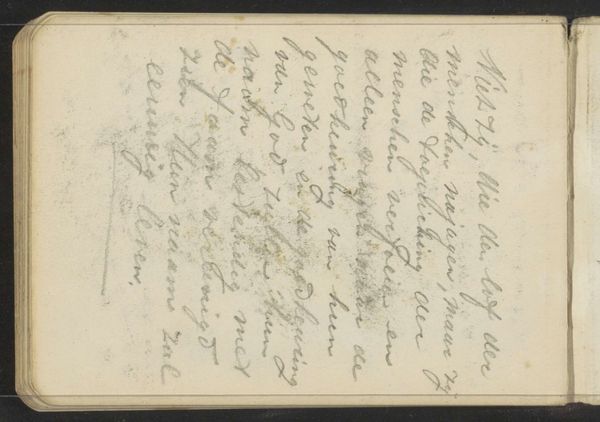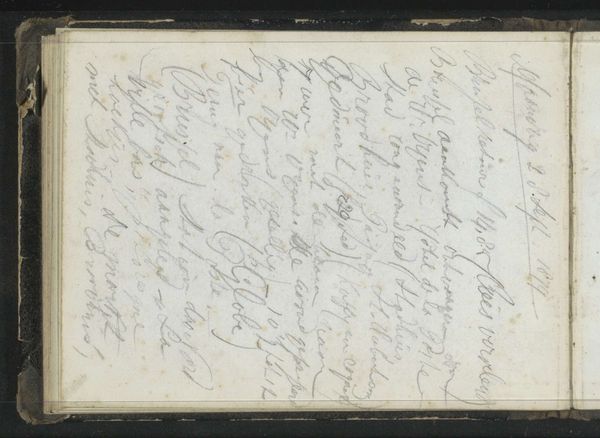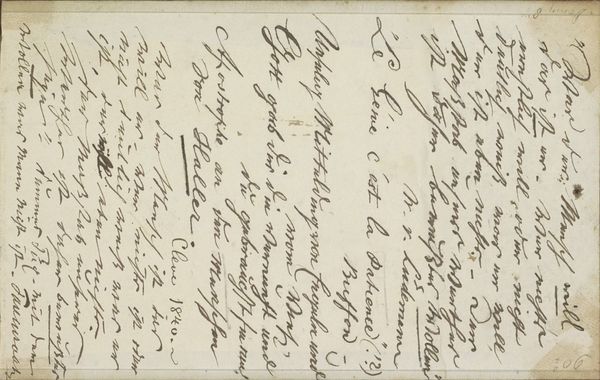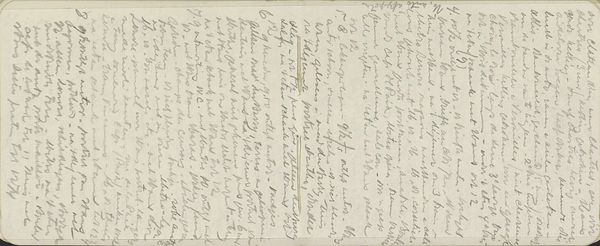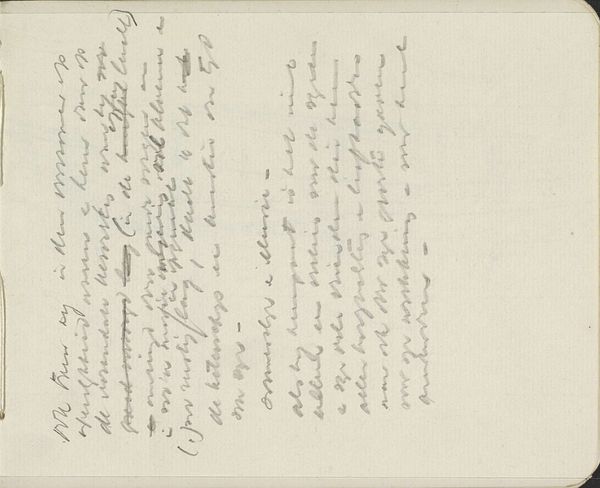
Copyright: Rijks Museum: Open Domain
Editor: Here we have Johannes Tavenraat’s “Fragment uit 'Waverley' van Sir Walter Scott,” created sometime between 1864 and 1880. It's an ink drawing on paper. The text, split between two languages, gives me the sense of a personal, almost intimate peek into a well-read mind. What do you see in this piece, particularly considering its creation and context? Curator: I see the intense labor involved in the transcription and reproduction of text by hand. Notice how the materiality of the paper, ink, and pen dictate the very form the words take. The act of meticulously copying excerpts from Walter Scott’s novel transforms the literary work into a material object, a testament to the artist’s engagement with both text and craft. What was the social function of such handcrafted documents in Tavenraat's time? Editor: Possibly a form of personal study or even a sharing of cherished passages before mass printing was easily available? Curator: Exactly. The 'Fragment' also disrupts our notions of "high art," traditionally reserved for painting and sculpture. This sketchbook page elevates the everyday practice of writing and copying to an artistic endeavor. Consider the implications of Romanticism; a movement celebrating imagination, emotions and nature versus industrialised creation, and distribution. What are your thoughts on the connection between production means and value then? Editor: So, it's not just *what* he wrote, but *how* he created the work, highlighting labor and skill, that elevates the fragment. Curator: Precisely! Understanding the social context and materials used shifts our appreciation of the artwork and invites us to reconsider traditional boundaries. Editor: I see it differently now! Thanks for making me consider it.
Comments
No comments
Be the first to comment and join the conversation on the ultimate creative platform.
